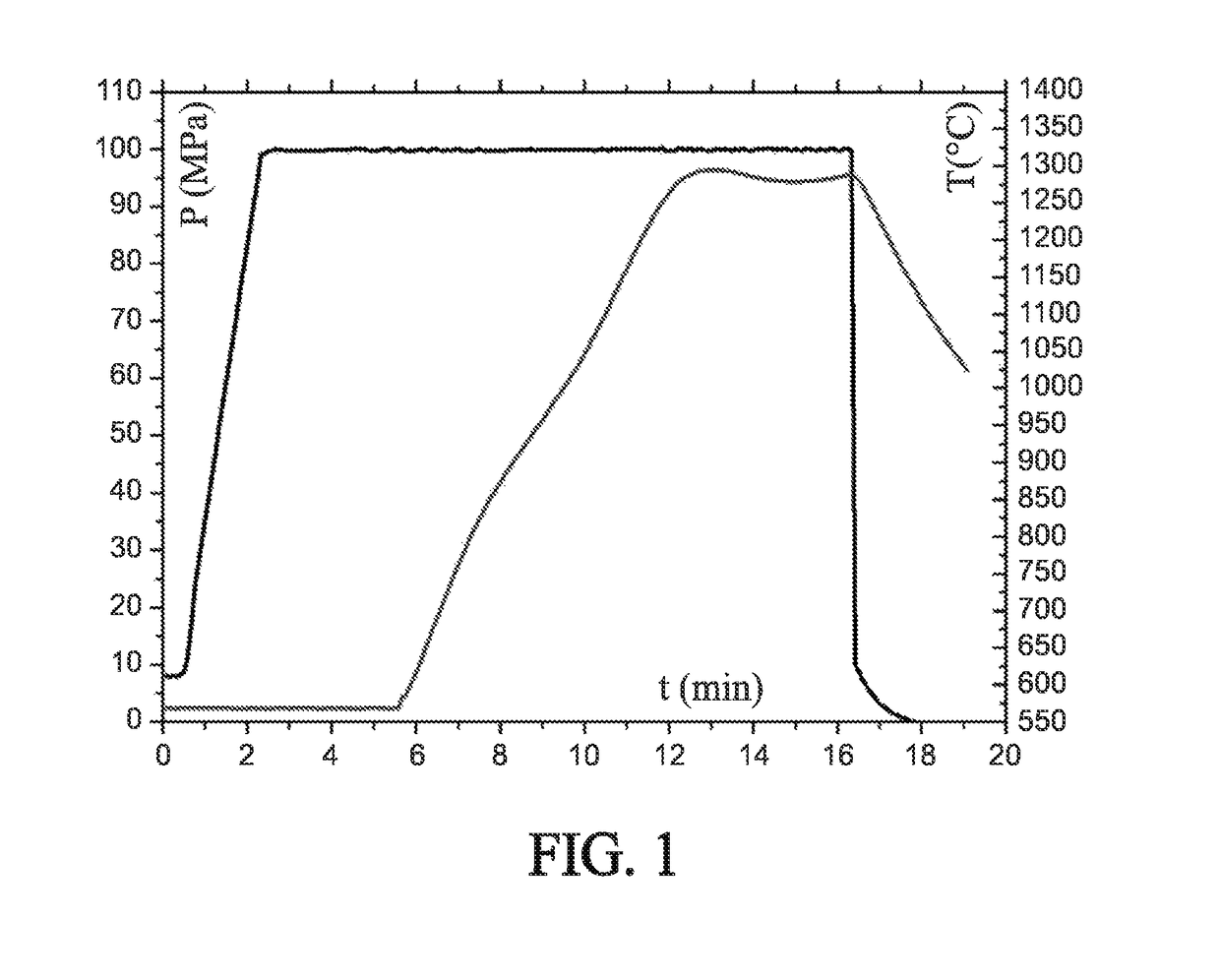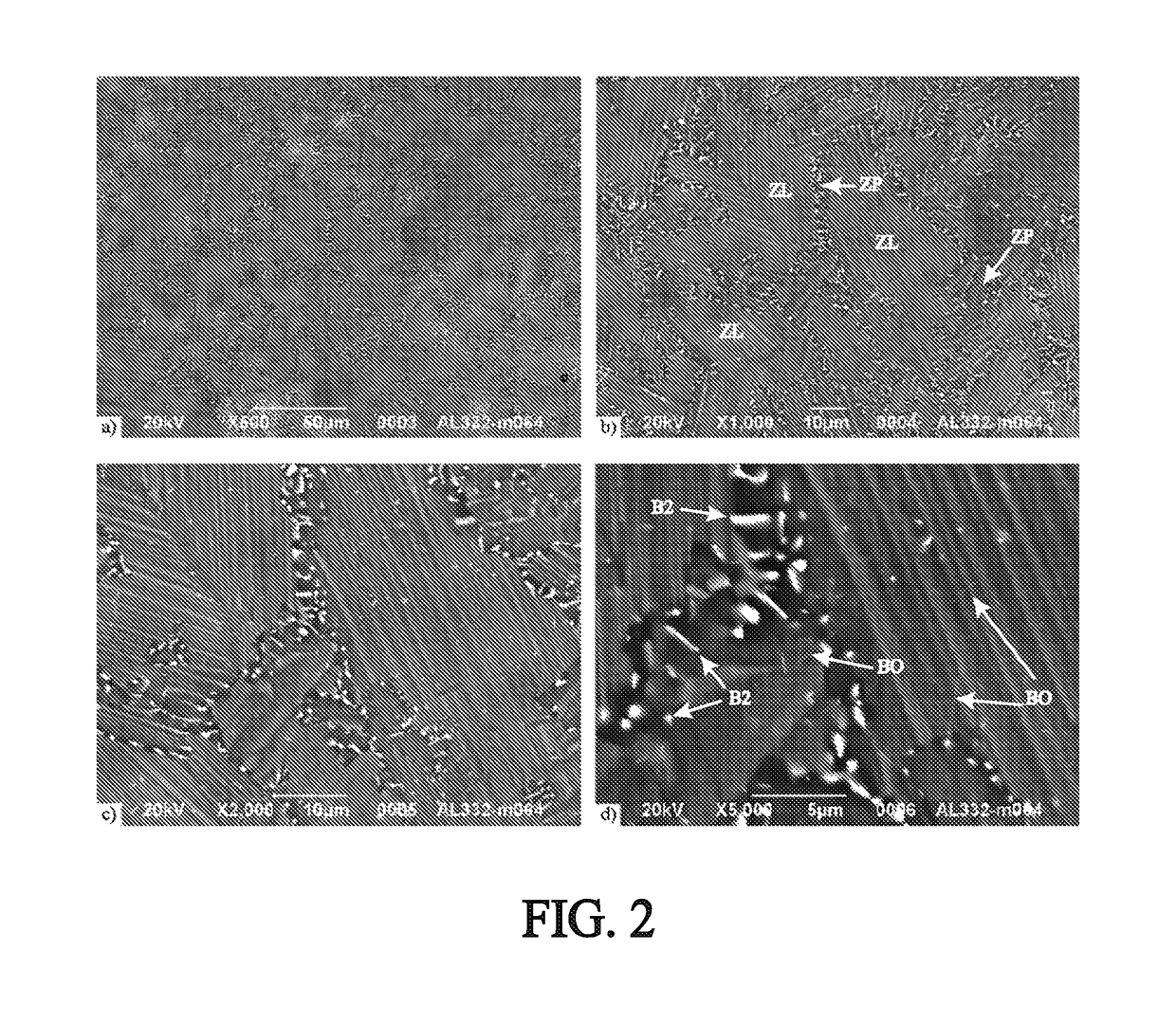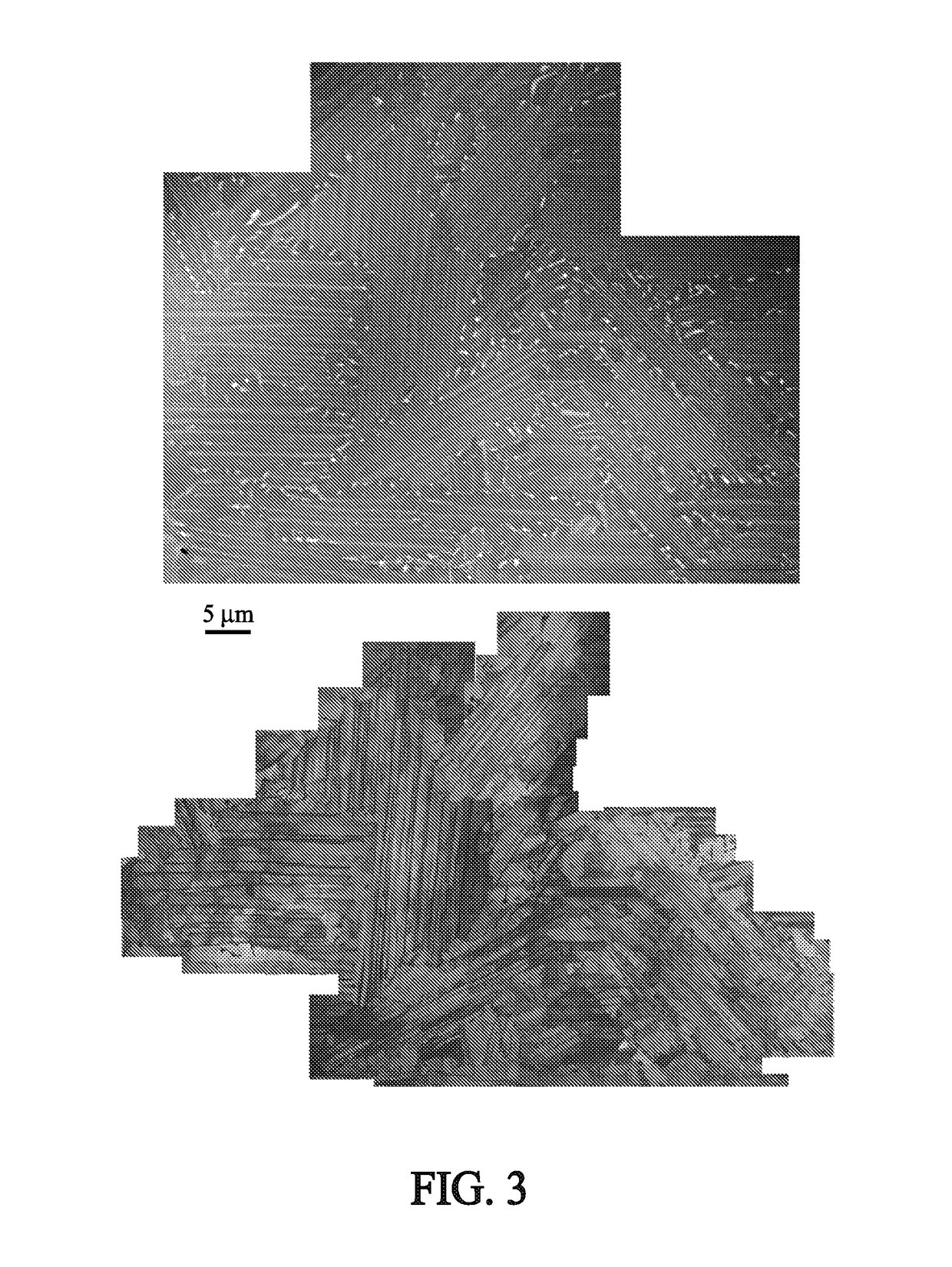Method for manufacturing a titanium-aluminum alloy part
a technology of titanium alloy and manufacturing method, which is applied in the direction of turbines, machines/engines, mechanical apparatus, etc., can solve the problems of grain enlargement, fast over 100 microns, and inability to use such blades in other stages of airplane engines, etc., and achieve excellent properties and mitigate the disadvantages.
- Summary
- Abstract
- Description
- Claims
- Application Information
AI Technical Summary
Benefits of technology
Problems solved by technology
Method used
Image
Examples
Embodiment Construction
[0062]Here manufacturing a part in a titanium and aluminum based alloy by a method known by the name SPS (Spark Plasma Sintering, in French frittage flash) from a powder component material is proposed in an original way. The alloy utilized has the following composition in atomic percentages:[0063]42 to 49% aluminum,[0064]0.05 to 1.5% boron,[0065]at least 0.2% of at least one element selected from tungsten, rhenium and zirconium,[0066]optionally 0 to 5% of one or more elements selected from chromium, niobium, molybdenum, silicon and carbon, the balance being titanium and the total of the elements without aluminum and titanium being between 0.25 and 12%.
[0067]This material contains heavy elements in a quantity of less than 5 atomic % and boron in very low quantities (0.05 to 1.5%). Preferably, the material comprises, in addition to titanium, aluminum and boron, at least one of the following elements in the proportions defined below:
[0068]0.2 to 4% tungsten,
[0069]0.2 to 4% rhenium,
[007...
PUM
| Property | Measurement | Unit |
|---|---|---|
| temperature | aaaaa | aaaaa |
| temperature | aaaaa | aaaaa |
| pressure | aaaaa | aaaaa |
Abstract
Description
Claims
Application Information
 Login to View More
Login to View More - R&D
- Intellectual Property
- Life Sciences
- Materials
- Tech Scout
- Unparalleled Data Quality
- Higher Quality Content
- 60% Fewer Hallucinations
Browse by: Latest US Patents, China's latest patents, Technical Efficacy Thesaurus, Application Domain, Technology Topic, Popular Technical Reports.
© 2025 PatSnap. All rights reserved.Legal|Privacy policy|Modern Slavery Act Transparency Statement|Sitemap|About US| Contact US: help@patsnap.com



